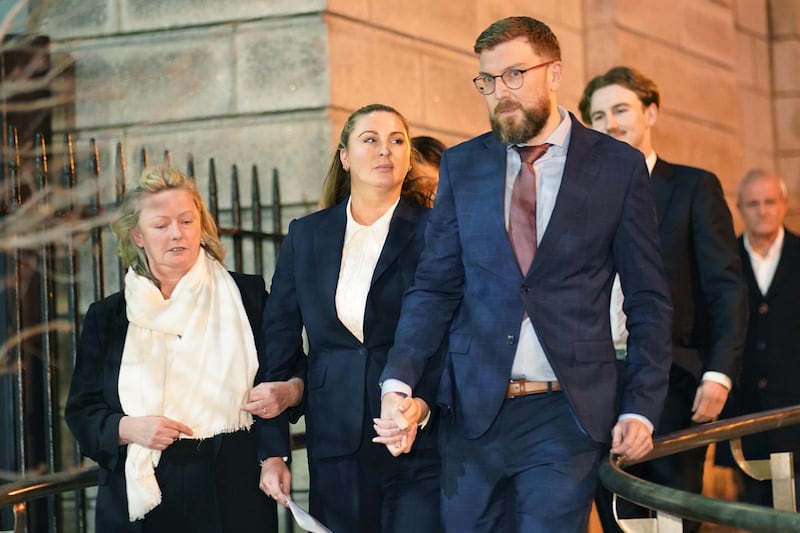Pared-down ideas, electronics and a focus on visual influences inform young Irish composer Linda Buckley's first work for the NSO, writes MICHAEL DERVAN
WRITING FOR orchestra is anything but a central concern for most young composers in the 21st century. Quite apart from anything else, many orchestras seem reluctant to take a punt on composers in their early 20s, and the first opportunity for Linda Buckley to work with the RTÉ National Symphony Orchestra has come at the age of 32.
She has, however, worked with orchestras before, on Osmosis with the amateurs of the Gateway Orchestra under Fergus Sheil in Wexford, and on turn for the Dresden Symphony Orchestra in 2009.
“That was a large-scale project which involved a video connection between Dresden and Venice. There was an ensemble in Venice, and the orchestra in Dresden, with a one-second time delay, which I had to write in to the actual piece.”
Her new work for the NSO is called chiyo, named after a female Japanese haiku poet from the 18th century.
“There was something about her work that had a very quiet, understated beauty, it really spoke to me, and I discovered some of her poetry when I was starting to work on this piece. Some of the poems just project a very clean, clear image. One of them is ‘cool clear water / and fireflies that vanish / that is all there is...’.
“This idea that you could create this single solid image, that’s something I wanted to take on board when I was working on the piece. So you have long blocks of sound which aren’t necessarily about creating kaleidoscopic blocks of colour within the orchestra. It’s very much about focusing on one family at a time.”
Buckley doesn’t listen to a lot of standard orchestral repertoire. Her interests incline towards early music, from medieval Léonin, Pérotin and Dufay, through the Renaissance and up to the baroque. The earliest composers she mentions after that period are Satie (“for his idea of setting a very strong sonic image for the listener, like he would in pieces like the Gymnopédies, and also this idea of playing with rates of change, like he does in pieces like Parade”, Stravinsky (for his woodwind writing and wide harmonic spacings), and Ligeti and Xenakis (for their dense textures).
“I’m not looking that far back into symphonic history. That’s an interesting thing about being a young Irish composer, that I don’t really feel I have the weight of tradition on my shoulders.”
Buckley likes the idea of working with the orchestra as she might with multiple layerings in an electronic work. She explains her distance from the large-scale symphonic music of the 19th century by the fact that she grew up on the Old Head of Kinsale, and her early engagement was with traditional music, her father’s accordion playing, and sean-nós singing. “I was always interested in pared-down ideas as opposed to a gargantuan orchestral soundworld.”
In spite of her regular work with electronics, she maps her pieces out on paper first. “People often talk of electronic music as sound-sculpting, that harmony and melody and rhythm are far more important in acoustic writing. I see no reason why you can’t flip that around, and have harmony, melody, and rhythm be very important in electronic writing, and have sound sculpting be incredibly important in acoustic writing. Often in my electronic music, harmony is incredibly important, rhythmic ideas, spatialisation, so it’s not necessarily about the sculpting of sound in that situation.”
She mentions practising the piano when young, and hearing “the sea, foghorns, and milking machines” in the background and wondering why they couldn’t become part of the music. And a lot of what she does, she says, “is influenced by the visual. It could be like the sonification of a white snow landscape, or of a cloud”.
The final composition is a kind of translation, even when the initial stimulus is more on the lines of what she calls an “aural hallucination”. “It’s almost like a dream, it’s like trying to remember parts of a dream, and that’s part of how you put the piece together in the end.”
The RTÉ NSO premieres chiyo under Alan Buribayev at the NCH tomorrow. Listen to Linda Buckley’s music at lindabuckley.org






